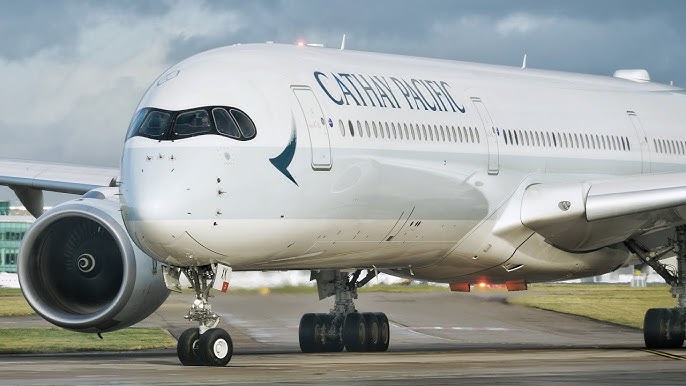HONG KONG: A Cathay Pacific Airbus A350’s engine caught fire earlier this month, and the reason for it was a fuel leak. Investigators have now found that leak could have caused extensive damage to the plane.
The Trent XWB-97 engine was made by British engineering giant Rolls-Royce. According to a preliminary report by the Hong Kong Air Accident Investigation Authority (AAIA), the leak was caused by a broken fuel hose.
The incident took place after the plane had taken off from Hong Kong en route to Zurich in early September. The pilots got a fire warning in the cockpit, shut down the engine and deployed fire extinguishers.
The plane, which had 348 passengers and crew on board, landed safely in Hong Kong.
The safety of the engines across the Cathay Pacific’s A350 fleet have now been called into question, especially after checks showed that there were issues with at least 15 of the aircraft.
According to the preliminary report, the protective surround of a fuel hose had ruptured, leaving a hole in the hose. There were also indications of a fire in parts of the engine, which had soot and burn marks.
More checks revealed five other fuel hoses in the same engine were also defective.
The report stated that if the problem had not been detected promptly, it could have escalated “into a more serious engine fire, potentially causing extensive damage to the aircraft”.
To deal with the issue, the AAIA has recommended that the European Union Aviation Safety Agency (EASA) require Rolls-Royce to develop new inspection requirements for the relevant engines.
EASA then made it a requirement for operators to use the same type of engine to carry out inspections of fuel pipes and remove any that were “potentially compromised”. It has also implemented a greater regime of inspections covering several aspects of the Trent XWB engine.
At Kaohsiung International Airport this morning, a Cathay Pacific Airbus 330-300 aircraft (B-LAQ) powered by Rolls Royce Trent 772B-60 engines, reportedly suffered an engine failure, leading to a loud noise, as experienced by the passengers.
The Cathay Pacific CX431 flight from… pic.twitter.com/cMhjIMAAMH
— FL360aero (@fl360aero) August 31, 2024
Cathay Pacific has stated that it had initiated a fleet-wide inspection of its Airbus A350 aircraft that cleared the aircraft for operation. It also said that it was in full compliance with EASA’s directive and would continue to “work closely with the airframe, engine manufacturers and regulator”.
Cathay Pacific procured its first Airbus 350 in 2016. The aircraft is a popular choice by airlines operating long-haul fleets as it is highly efficient and has low running costs.

